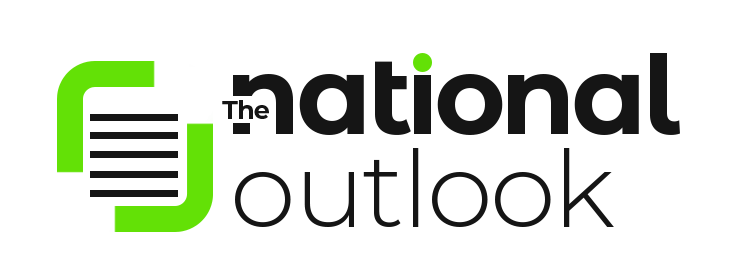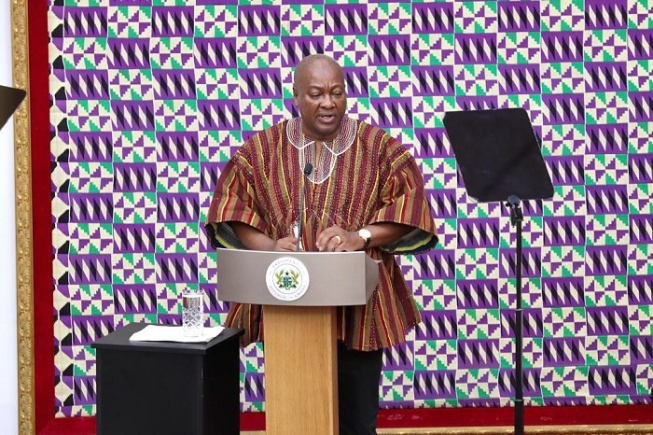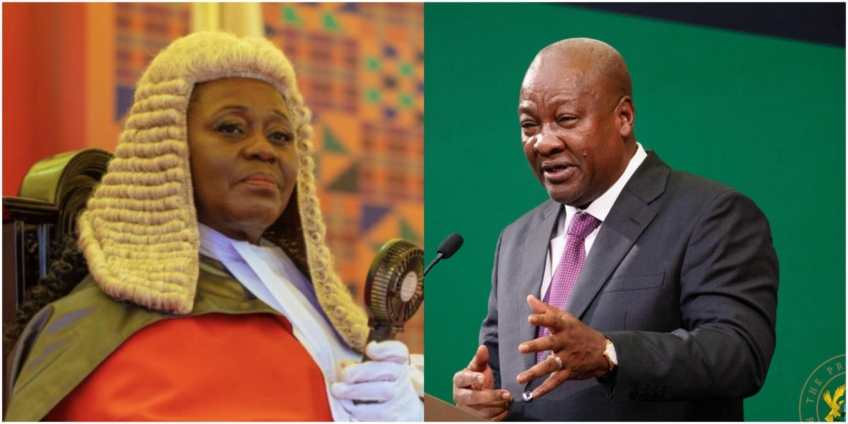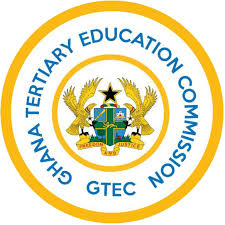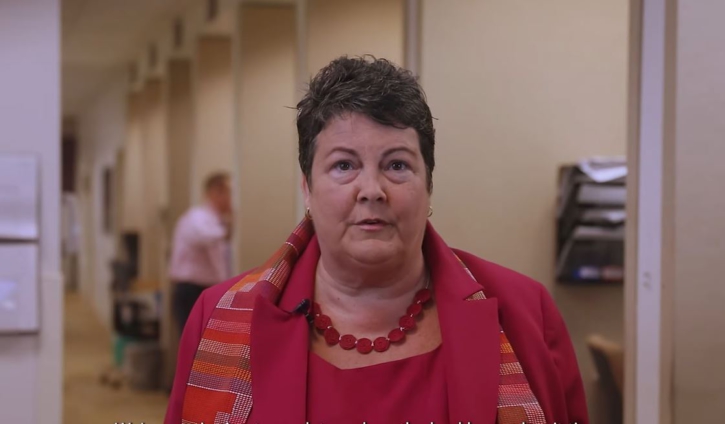IMPLEMENTING MAHAMA’S 24 HOUR ECONOMY POLICY
PART 5: INCREASED BUSINESS GROWTH, COMPETITIVENESS AND PRODUCTIVITY AT ENTERPRISE AND INDUSTRY LEVEL
Part 5 of this series of articles presents an implementation strategy for increased business growth, competitiveness and productivity at enterprise and industry level. This is Outcome 1 of the High-Level Program Design outlined in Part 2[1] of this article series.
Chapter 2.1.1 of the NDC 2024 Manifesto lists 12 priority sectors for 24HE.
These are Agro-Processing, Manufacturing, Pharmaceuticals, Construction, Financial Services, Extractive Industries, Sanitation and Waste Management, Hospitality Industry, Retail Centres, Transportation Services, Health Services, and Security Services.
This sector list is indicative.
New sectors may emerge, and some of those in the priority list may drop based on factors relating to competition, industry profitability, and the interests of domestic and foreign investors.
There are six principal and related activities to support enterprises and sectors in the 24HE sectors.
These are enhancing access to the local market; export markets; long term finance and low-cost finance; inputs and supplies; business and technical advisory services; and government regulatory services.
First, is enhanced access to the local Ghana market.
The NDC 2024 Manifesto outlines a couple of initiatives to support this objective. It includes the ‘Made in Ghana Agenda’ where government will use its spending power to stimulate demand by patronizing Made in Ghana goods. This entails a review, update and dissemination of the Public Procurement Authority’s (PPA) current Guidelines for Margins of Preference for local and international competitive bidding.
Most importantly, the PPA should track, monitor and evaluate the application of the guidelines by all MDAs and report to Cabinet accordingly. The application of the guidelines should also feature in the routine and specialized audits of MDAs by the Internal Audit Agency and Auditor General.
The NDC Manifesto also mentions local content initiatives in specific sectors including insurance, creative industry, oil and gas, ICT, banking and mining.
Currently, there are local content rules defined by law in some specific sectors of the economy including mining, oil and gas, foreign direct investment. There are no local content rules in many other sectors.
A comprehensive local content assessment of all sectors of the economy is recommended to review the implementation and effectiveness of existing regulations; establish the need to introduce new rules covering other sectors of the economy; or enhance the scope and depth of existing rules.
The NDC has pledged to reinstate the Brand Ghana Council and Made-in-Ghana Committee to support promotion of Made in Ghana products. This work should complement the role of the Ghana Standards Authority as the lead public institution responsible for the development, dissemination and enforcement of national and international quality standards.
The government should vigorously tackle under-declaration, under-invoicing, mis-declaration, smuggling, removal in-bond, removal in transit and corruption at entry points of imported items. Laxed enforcement of these measures leads to increased smuggling of uncustomed goods and unfair price competition to local producers.
For instance, local producers of vegetable oils have long complained about smuggled and uncustomed ‘low priced’ imports reducing demand for their products and adversely affecting palm oil producers and oil palm farmers.
Lastly the Ghana International Trade Commission (GITC) should be more active in checking dumping of foreign goods in the local market. GITC is little known by the private sector. Like most public institutions, it has no functional website. GITC should vigorously engage private sector industry groups to create awareness of its existence and its functions.
Second, is enhanced access to export markets.
Ghana recorded a trade surplus of US$3.1 billion in 2024. Total exports was US$20.6 billion and total imports was US$17.5 billion.
Three products accounted for 83.4% of all exports in 2024. These were gold (55%), mineral fuels and oils (18%), and cocoa beans and products (10%). These same products accounted for 80.6% of exports in 2023.
In 2024, Ghana’s largest export destination by continent was Asia accounting for 38% of exports value. This was followed by Europe (34%), Africa (20%) and North America (6%).
And more than half of the export to each continent were received by one country.
The United Arab Emirates received 53% of Ghana’s exports to Asia; Canada received 59% of exports to North America; Switzerland accounted for 60% of exports to Europe; South Africa was the destination for 61% of exports to Africa; Brazil dominated exports to South America with a 94% share.
The accelerated export programme (AEXP) for 24HE then should rest on two pillars – diversify the range and volume of exported products; and diversify export destinations. This will be accompanied by the needed enterprise level support for product development, export promotion, financing, and supply chain development among others.
AEXP must factor the current and future uncertainty in global trade triggered by President Trump’s tariff measures and accompanying retaliatory responses from Europe, China, Canada, Japan and others.
The US African Growth and Opportunity Act (AGOA) under which African countries export tariff free to the United States expires on 30th September 2025. It’s renewal under President Trump is uncertain.
Even if AGOA is renewed the terms and conditions will not be the same as before. Bilateral US-Ghana trade agreements under President Trump remain a possibility but not advisable because it will be a David-Goliath affair.
Ghana should work hand in hand with other African countries to strike a US-Africa trade deal.
The lead agencies to deliver the AEXP are the Ghana Export Promotion Authority (GEPA) and GhanaEXIM Bank in collaboration with allied public institutions like the Ghana Standards Authority, Food and Drugs Authority, Ghana Enterprise Agency, financial institutions, private sector service providers and civil society organisations working in export value chains.
AEXP should require the Customs Division of the Ghana Revenue Authority to lead other agencies to tackle among others the low scores in risk management, coordinated border management and trusted trader programs identified in the World Bank sponsored Ghana Business Ready Report launched last week in Accra.
AEXP should also feature export of skilled labour under bilateral labour migration agreements (BLMA) with countries in need of such personnel. Already the Ministry of Labour, Jobs and Employment in collaboration with the Youth Employment Agency (YEA) has launched the Work Abroad programme.
Third, is enhanced access to long term and low-cost finance.
There is an acute lack of long-term finance in Ghana be it equity or debt. The Ghana Stock Exchange (GSE) after more than 35 years of existence has not lived up to expectation as an avenue for indigenous SMEs to raise long term capital. Currently, 32 companies are listed on the GSE with the majority being multinationals.
There is little traction on the Ghana Alternative Market (GAX) after 12 years of operation with only five companies listed.
Ghanaian pension funds schemes (Tier 1, 2 & 3) have experienced a compound annual growth of 23.5% from 1999 to 2023 with GHS 61.8 billion of assets under management (AUM) at the end of 2023.
About 90% of the private pension schemes AUM of GHS 46.5 billion were held in Government of Ghana securities and Bank of Ghana bills. About 4% were invested in the equity and debt of private companies.
The National Pensions Regulatory Authority (NPRA) Guidelines on Investment of Tiers 2 and 3 Pension Scheme Funds issued in September 2021 is quite comprehensive. It provides minimum standards to ensure the safety and fair returns on investment of pension funds and also enables the pension funds to impact positively on the Ghanaian economy.
The Guidelines provides maximum investment thresholds and conditions for investing in various asset classes including securities issued by the Government of Ghana; MMDAs and statutory agencies; corporate debt securities; equity in listed companies; Collective Investment Schemes (CIS); Alternative Investments (AI); and external investment.
Yet, the pensions industry has concentrated investments in Government of Ghana securities and Bank of Bills. We have learnt the hard way that government securities are not risk free. The past government’s domestic debt exchange (DDE) of 2022 – 2023 delivered haircuts to government bond holders.
NPRA in collaboration with the Securities and Exchange Commission (SEC) and Bank of Ghana (BOG) should engage the pension and financial services industry to determine a way forward for the pensions industry to invest and contribute to 24HE.
Ghanaian MSMEs are heavily reliant on debt financing from financial institutions including universal banks (DMBs), savings and loans companies (SLC), rural and community banks (RCB), and microfinance institutions (MFIs).
According to the Bank of Ghana only 23% of the GHS 384 billion assets of Deposit Money Banks (DMBs) at the end of 2024 were claims on the private sector (i.e. loans and advances to private companies).
With respect to the rural and community banks only 27% of their total assets of GHS9.3 billion at the end of March 2023 were in loans and advances. In contrast, 53% of their assets were held in bills and bonds.
The sectoral distribution of the total outstanding credit of GHS 96 billion of DMBs shows only 5% for agriculture, forestry and fishing; 1% for export trade; and 11% for manufacturing.
Ironically, the allocation for import trade was 9% and services 32%.
In December 2024, the average lending rate of DMBs was 30.25% per annum. Ghanaian SMEs get secured loans from DMBs at much higher rates. And the rates for SLCs, RCBs and MFIs typically range from 3% to 6% per month (i.e. 36% to 72% per annum).
The single most important contributor to this sorry state of affairs and the acute financing challenges Ghanaian MSMEs face is government borrowing arising from the poor fiscal situation. The oft repeated phrase of government crowding out the private sector from financing remains with us after almost 40 years when that expression became popular.
President Mahama’s Economic Policy and Budget Statement for 2025 presented to Parliament on 11th March 2025 by the Finance Minister, Hon Ato Forson, makes significant spending cuts and introduces a bundle of expenditure management measures to reduce the overall cash balance of negative GHS 61.4 billion for 2024 (provisional outturn) to negative GHS 56.9 billion in 2025.
Most importantly, the medium-term expenditure forecast (MTEF) is to aggressively reduce the overall negative cash balance to GHS30.4 billion in 2026, GHS 25.3 billion in 2027, and GHS 14.5 billion in 2028.
The sweetness of the pudding is in the eating. So, the rest boils down on implementation by President Mahama, Finance Minister Ato Forson, and all appointees.
In Part 4[2] of this series of articles, I outlined the reset agenda for Bank of Ghana and monetary policy and how that will contribute to enhancing access to finance and lower the cost of finance for Ghanaian enterprises.
Fourth, is enhanced access to inputs and supplies.
Ghana’s domestic supply chains are generally inefficient and ineffective in delivering the right quantity and right quality of goods and services at the right price to buyers especially for processing and value addition.
For instance, there are several agro-processors in different commodity value chains operating below capacity for most part of the year. Others have shut down entirely because there are no raw materials, or they cannot compete with foreign buyers to buy raw produce.
The primary reason for this is the low productivity of the smallholder dominated agriculture value chains.
The Ministry of Food and Agriculture’s (MOFA)’s Facts and Figures for 2022 provides data on
average farm yield (in metric tons per hectare Mt/ha), potential farm yield under rain-fed conditions (Mt/Ha), and percentage achieved for 23 crops.
Except for mango which scored 108% the other crops scored low. For instance, cassava was 54%; plantain 38%; maize 47%; soybean 61%; cashew 14%; tomato 42%; pepper 31%.
Ghana has sufficient land under cultivation to produce enough food for household consumption and also provide sufficient raw materials for existing agro-processors if agricultural productivity is improved significantly.
The game changer will be to provide adequate low-cost financing (maximum 10% p.a. interest) to farmers whether small, medium and large to purchase high-quality seeds, seedlings and other planting material; fertilizers and soil enhancing nutrients; farm equipment and machinery and or mechanization services; post- harvest-handling technologies; and related farm management and extension services from both public and private sources.
Past governments agricultural sector subsidies for seed, fertilizers and farm equipment have not delivered significant productivity gains because of rent seeking, outright corruption and smuggling of subsidized inputs from Ghana across our land borders to Burkina Faso, Togo and Cote d Ivoire.
It is time to try a different approach focusing on developing the private inputs markets and providing the requisite finance to farmers to purchase inputs and services on the open market.
There should be non-politicization, proper targeting and selection of beneficiaries of agricultural financing schemes to avoid the age-old problem of low recovery on government loans and input credit schemes.
Furthermore, the Ministry of Trade and Industry should collaborate with the Association of Ghana Industries (AGI), business associations and CSOs working in specific sub-sectors to identify and resolve unique supply chain management issues.
Fifth, is enhanced access to business and technical advisory services.
Ghanaian enterprises, MSMEs in particular, have a continued need for a wide range of business and technical advisory services to support their growth, productivity and competitiveness.
Business and technical advisory services include private firms and consultants, CSOs and government institutions like the Ghana Enterprises Agency (GEA), Ghana Standards Authority (GSA, Environmental Protection Agency (EPA), and Food and Drugs Authority (FDA).
Today, most regulatory bodies offer training and other technical services for a fee to boost their Internal Generated Funds (IGF). But that is not enough to address the multitude and wide scope of MSME needs.
All regulators should assess the business and technical advisory needs of their clients, and publicly request expressions of interest from individuals, firms and CSOs to be registered with them as service providers for referrals.
Further to that, regulators should publish the names and contacts of the service providers on their website for ease of access by their clients.
For a start, regulators should not charge a fee for registering and listing service providers on their website. They should treat it as public goods. They may however consider charging a commission for business they refer to service providers.
To minimize rent seeking from public officials, service requests and referrals should be published annually on each regulator’s website.
Sixth, is enhanced access to government regulatory services.
There is considerable waste of time, transportation and communication costs for the public and enterprises to move from office to office to obtain and renew permits and other regulatory approvals, and the accompanying ‘go and come’ syndrome.
Notwithstanding the existence of the GHANA.GOV platform, the World Bank sponsored Ghana Business Ready Report launched in Accra last week reveals a wide scope for public institutions to provide digital services to the public and enterprises to reduce service delivery times especially in the areas of business registration and verification of records; land registration, titling and verification of ownership; building permits; environmental permits; court processes; and government procurement.
The GHANA.GOV platform should be re-engineered and vigorously promoted to the public and business community. Its functionality should include shared databases and business processes for the use of regulators.
For instance, in the downstream petroleum industry the GHANA.GOV portal should enable the Registrar of Companies, MMDAs, National Petroleum Authority, Ghana National Fire Service, Ghana Standards Authority, Factory Inspectorate Division and other regulators in that space to access common information on their shared clients like business name, address, Ghana GPS location, geolocation, contact persons, directors, and existing permits.
Lastly, regulators should reset their strategy, organizational culture, rules and operating procedures to equally focus on the development and growth of their clients. They should not focus on compliance only.
Part 6 of this article series will present an implementation strategy for 24HE Outcome 2, that is,
improved institutional, legal and regulatory environment for the functioning of 24HE. It will draw on specific pledges in the NDC 2024 Manifesto and contemporary data.
https://www.linkedin.com/in/nicholas-issaka-gbana-98478536
https://web.facebook.com/n.issaka.gbana
@GbanaIssaka
The writer is a Development Economist and Chartered Accountant, Member of the National Democratic Congress, and Executive Member of Eagles Forum, a social democratic organization.
He was a Member of the NDC’s 2024 Manifesto Committee on Jobs and Employment Creation and Lead for the 24-Hour Economy Task Team. He also served on the 2024 Transition Team Social Sector Committee.
[1] https://www.linkedin.com/pulse/implementing-mahamas-24-hour-economy-policy-part-2-issaka-gbana-7nvmf/?trackingId=wSan7k%2B5RTqrioqbI8rq0w%3D%3D
[2] https://www.linkedin.com/pulse/implementing-mahamas-24-hour-economy-policy-part-4-issaka-gbana-rrhif/?trackingId=VsmG1Mw7TvO24o7D3hoIPg%3D%3D
